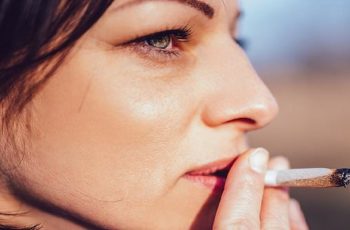Here’s How To Solve Your Sleep Problems With Science
It is estimated that we spend about a third of our life sleeping, though for many of us, that time is drastically cut due to insufficient sleep caused by a sleep condition, environmental distractions, or physical ailments that prevent us from achieving a good night’s rest.
Barring a serious sleep condition such as insomnia, the quality of our night’s rest and our overall health depend directly on our sleep posture and on our daily routine before going to bed.
Those who suffer from sleep problems may find bedtime relief by implementing these science backed suggestions to help promote restful sleep.
PHYSICAL AILMENTS
Shoulder Pain
The best sleeping posture is lying on your back. Put a thin pillow (an orthopedic pillow will work best for you) under your head. Take another pillow, place it on your stomach, and hug it.
Back Pain
Sleeping on your back is likely the best position for you. Place a pillow under your knees to help restore natural spinal curves and reduce the tension in your tendons. You might also try a small rolled towel under your lower back for additional support.
If you’re a stomach sleeper, put a pillow under your lower abdomen and pelvis so that the small of your back doesn’t move forward.
If you like sleeping on your side, then it’s best to take the fetal position. Draw your legs up slightly toward your chest, keeping your back naturally arched. Put a small pillow between your knees. This can help you take the load off your lower back.
Leg Cramps
Leg cramps are usually sudden spasms, or tightening, of muscles in the calf, feet, or thighs. Almost 80% of people suffer from this problem, regardless of age. Night leg cramps are most often related to some disease, nerve damage, or lack of trace elements. If you experience this condition too often, talk to your doctor.
One good way to stop leg cramps is to get the calf muscle stretched and strengthened. You can try doing yoga or massaging your legs before bedtime. Just remember: if you want to achieve good results, you should exercise regularly.
Heartburn
If you suffer from frequent heartburn it’s a good idea to lie on your left side while catching some z’s. The left-side sleeping position prevents stomach contents from coming back up into the esophagus, preventing heartburn.
Changing your sleep posture may help to alleviate heartburn. Use a roll pillow or the foot of your bed to keep your legs lifted during sleep. The venous blood accumulated in your legs will run downward, and you’ll feel better. Also, try rubbing or lightly massaging your legs before retiring for the night, and avoid consuming caffeine at least 6 hours before bedtime.
PRE – BEDTIME RITUALS
No Technology
It can be tough to banish phones and computers before bedtime, but you should. It really helps if you have trouble falling asleep. The light from screens affects our sleep-wake cycles.
No Caffeine
Avoid consuming caffeine — coffee, energy drinks, soda, black tea, chocolate — at least 6 hours before going to bed.
Exercise
Try to get a good workout in the morning and afternoon. This helps to tone your whole body, improves your blood circulation, and helps you fall asleep much faster.
No Caffeine
Alcohol disrupts the water balance in your body and affects your sleep cycle.
Room Temperature
Being too hot or too cold can greatly affect your sleep. If you’re able, set the ideal sleeping temperature is 68-71.6°F.
Routine Wake-up Time
Set your alarm for the same time every day (even on the weekends). If you want to wake up early, you need to go to sleep early in the evening.
Snoring Remedies
If you tend to snore, avoid sleeping on your back. In this position, throat tissues sag and your tongue falls backward into your throat narrowing the airway.
Choose your pillow carefully. Overly soft pillows can cause your head to tilt backward and increase snoring. Use an extra pillow or elevate the head of your bed a few inches to stop your tongue from falling back over your windpipe.
Sleep on your side. With your head lying in a natural position, nothing will restrict the airflow.
If you found this article helpful, please share with friends and family by clicking the button below!
Source: brightside.me




